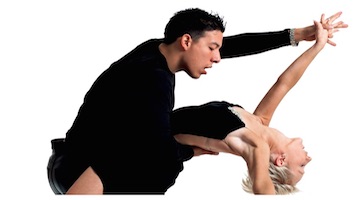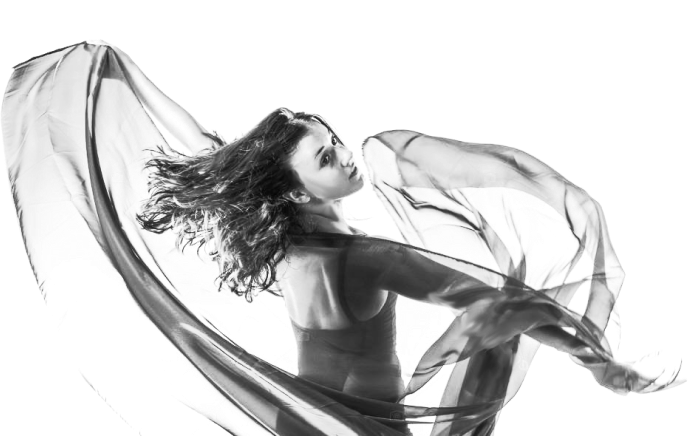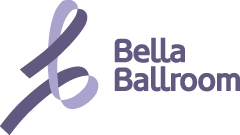
Latin Dance
Salsa Dancing
This fun and energetic dance is the most popular of all the Latin dances because it is easy to learn and is fantastic for all ages and dancing abilities. Salsa dancing has many fast turns, exciting footwork, rhythmic hip movements, and lively music.
History of Salsa Dancing
Salsa dancing has an intricate and debated history that very much mirrors the development of its counterpart, salsa music. The term “salsa” was created in New York in the 1960’s and is now used to describe both the popular style of music and it’s matching dance. Salsa, meaning “sauce,” conveys feelings of spicing things up and enlivening the moment. The nickname once referred to an assortment of different music including Charanga, Cumbia, Plena, Bomba, Guaracha, Mambo, Festejo, Meregnue, Rhuma, Són Montuno, Cha cha cha, Danzón, Són, Guguanco, Cubop, Guajira, and others. Some of the styles of music have maintained their distinctive individuality while others were mixed, creating salsa. As musicians from Cuba, Puerto Rico, Mexico and South America came to New York to perform, they collaborated their native musical styles. They also incorporated in American Jazz influences. These musicians traveled back and forth between their home countries and New York with their newfound musical fusion hence generating different styles of salsa music in different places. Even today, Cuban, New York, Colombian, and Puerto Rican salsa all have their own distinctive sounds.
During the 1940s and 50s, Cuban musicians played a big role on the development of music in New York. They heavily shaped the sound of salsa music until Fidel came to power. When diplomatic relations between Cuba and the United States fell out, the U.S. prohibited Cubans from traveling to the United States and banned Cuban recordings from receiving airtime in the States. As Cubans became shut out of the U.S., Puerto Ricans and NuYoricans (New Yorkers of Puerto Rican descent) took on the New York music scene. Puerto Ricans embodied a classic polished sound following jazz structure and showcasing lengthy instrumental solos.
Much like salsa music, salsa dancing developed through various collaborations and cultural influences. It too has grown and taken on distinctive styles that vary by region. Born of Latin and Afro-Caribbean roots, the dance is now celebrated all over the world and has varied defining characteristics most notably in Puerto Rico, Cuba, and New York.
While salsa dancing did not stem from a specific person or region, a significant part of the dance originated in Cuba. The French who came to Cuba fleeing Haiti brought their country dance, Danzón to Cuba. This dance mixed with African rumbas like the Guaguanco, Yambú, and Colombia as well as a Cuban dance called the Són which blended Spanish guitar and African rhythms. This hybridizing phenomenon also happened in Colombia, the Dominican Republic, and Puerto Rico on a smaller scale. Some will claim that salsa is Puerto Rican. Others say the dance is Cuban. Some suggest that it’s a New York creation. While the detailed history of salsa dancing is often debated, most will agree that salsa dancing is a North American interpretation of a dance based in Afro-Latin roots.
Salsa Dancing Today
Today it’s possible to see the many different styles of dancing and music that merged to create modern salsa dancing in Orange County and the rest of the world. Salsa dancing socials are commonly held in nightclubs, bars, restaurants, ballrooms, and festivals. The dance is so popular that it can be found in metropolitan cities on an international scale.
In recent years, salsa festivals have become very prevalent in the dance scene. Festivals can include Salsa competitions, instructional dance workshops, live salsa music, and open dance socials. They also often feature neighboring social Latin dances such as Cha cha cha, Bachata, Kizomba, and Merengue. Annual festivals, called Salsa Congresses, are hosted every year in large cities and aim to attract a plethora of salsa dancers from other cities and countries. Salsa Congresses give Salseros the opportunity to grow as dancers, share their passion for the dance, exchange moves and tips, network, and build the salsa dance community. One can also easily find Salsa vacations, cruises and get-aways for dance fanatics.
Today within the United States, New York and Los Angeles are considered the top cities for salsa dancing. Both sides of the nation host large salsa dance communities, and each has developed its own unique characteristics.
New York salsa dancing is largely influenced by residing NuYoricans and the fast flash footwork of Puerto Rico. New Yorkers’ dance movements emphasize efficiency, elegance, control, precision of timing, and body isolation technique. Dancers enjoy complex tightly woven patterns and also showcase the Latin Hustle influence left over from the disco craze of the 70s and early 80s. New York dancers dance on the 2, which means that their starting step and their breaking step start on the second count of the measure. It’s synchronized with the accented slap of the pattern played on the conga drums known as the tumbao.
Los Angeles, salsa dancing is noted for it’s emphasized sensuousness, theatricality, acrobatics, dips, tricks, and spins. The dance aims to impress and dazzle. LA dancers often dance “suelto” or perform “shines” within a dance. “Shining” is when a couple breaks away from each other in the middle of a song and gets their solo dancing on. Unlike New York Salsa, LA dancers move on the one. They are also known for using cross-body leads, a movement where partners exchange positions in a counter-clockwise direction. This lends to the circular nature of Los Angeles dancers where movement keeps its momentum. Orange County (and New York) salseros adopt “slot” dance etiquette where dancing pairs avoid traveling and stay in a more compact position.
Salsa Music
- “El Tu Tun de Tu Corazon” Orquestra la palabra
- “Lloraras” Oscar D’Leon
- “Vivir Lo Nuestro” Marc Anthony and La India
- “El Gran Varon” Willie Colon
- “Celebracion” Eddie Santiago
- “Ando Por Las Nubes” Victor Manuelle
- “Ella Lo Que Quiere Es Salsa” Victor Manuelle
- “Me Libere” El Gran Combo
- “Ran Kan Kan” Tito Puente
- “Si Tu Me Besas” Victor Manuelle
- “Sin Salsa Nay Hay Paraiso” El Gran Combo
- “Valio La Pena” Marc Anthony
- “La Vida es un Carnival” Celia Cruz
- “Lluvia” Eddie Santiag
- “Acuyuye” DLG
- “Thinking of You” Lenny Kravitz
- “Mi Cali” Alberto Garcia
- “Dance City” Eddie Torres
- “Fragile” StingHector Lavoe
- “Vivir Mi Vida” Marc Anthony
- “La Comay” Sonora Carruseles
- “No es Fácil, que No que No” Los Van Van (Songo)
- “Descarga de Hoy” Cubanismo
- “Aqui el que Baila Gana” Los Van Van (Songo)


